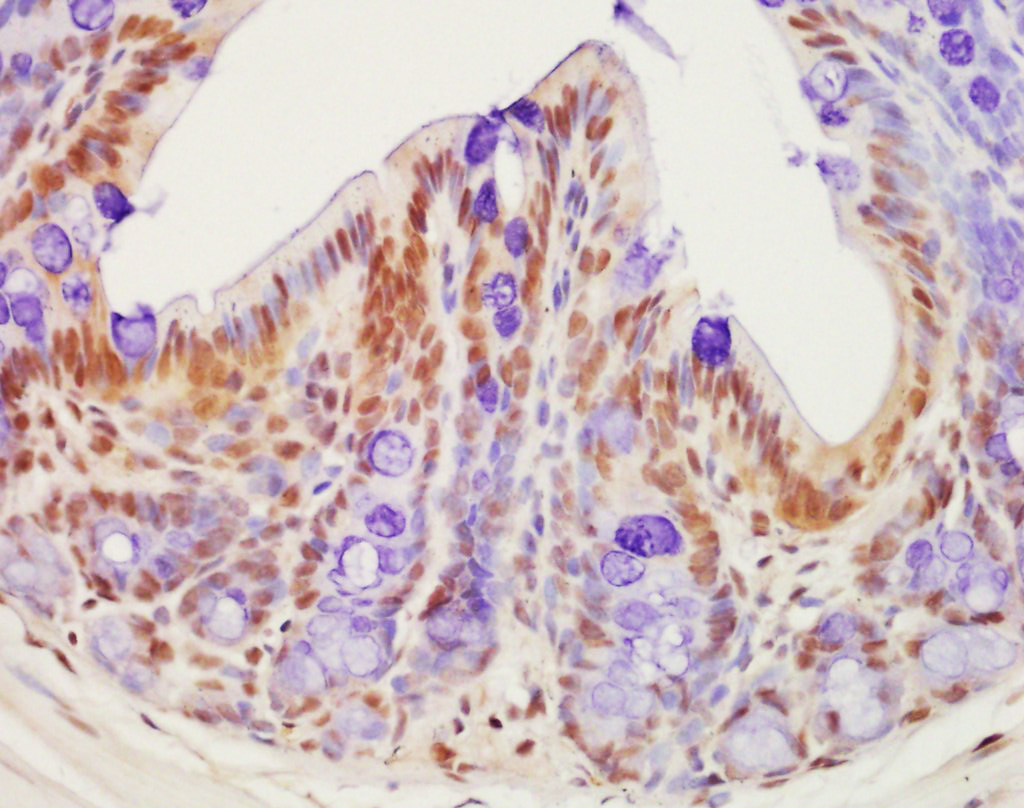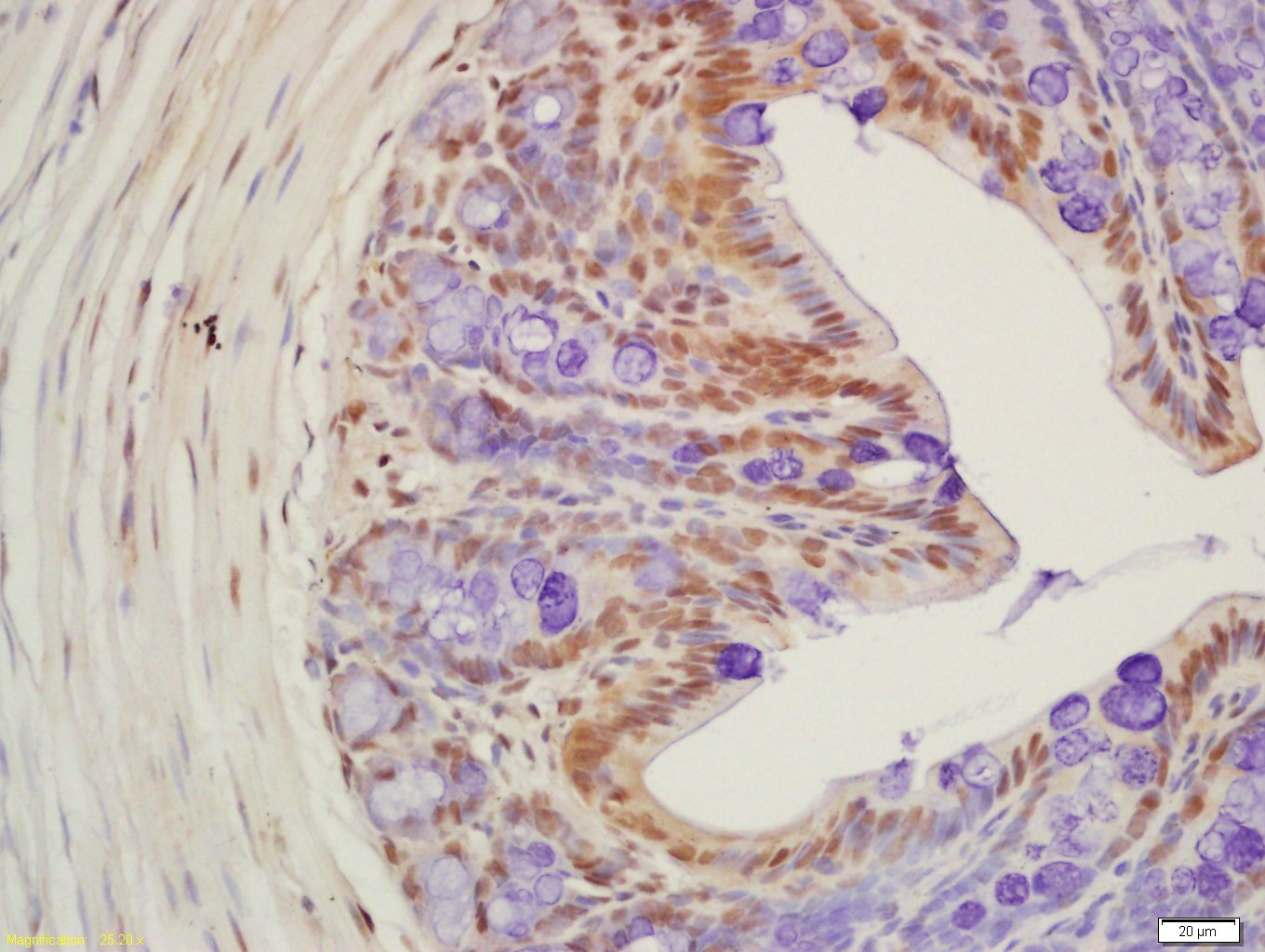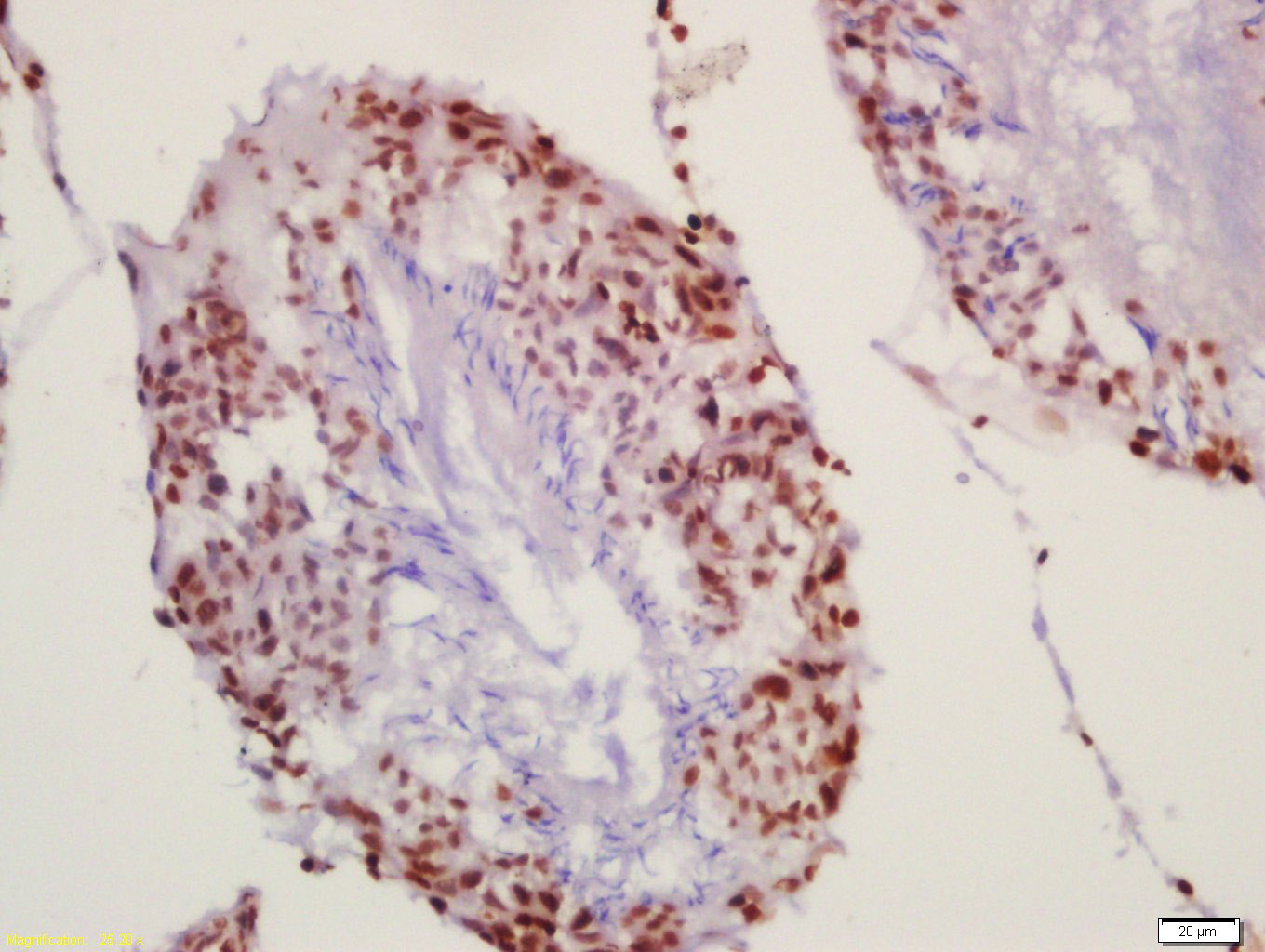
Rabbit Anti-Histone H2B (Acetyl K20)antibody
Acetyl-Histone H2B (Lys20); Histone H2B (Acetyl-Lys20); Histone H2B (Acetyl Lys20); Histone H2B (Acetyl-K20); H2B.1; H2B.1 B; H2B.b; H2B.c; H2B.d; H2B.e; H2B.f; H2B.j; H2B.q; H2BFB; H2BFC; H2BFD; H2BFE; H2BFF; H2BFJ; H2BFO; H2BFQ; H2BFS; HIRIP2; HIST1H2BB
View History [Clear]
Details
Product Name Histone H2B (Acetyl K20) Chinese Name 乙酰化组蛋白H2B抗体 Alias Acetyl-Histone H2B (Lys20); Histone H2B (Acetyl-Lys20); Histone H2B (Acetyl Lys20); Histone H2B (Acetyl-K20); H2B.1; H2B.1 B; H2B.b; H2B.c; H2B.d; H2B.e; H2B.f; H2B.j; H2B.q; H2BFB; H2BFC; H2BFD; H2BFE; H2BFF; H2BFJ; H2BFO; H2BFQ; H2BFS; HIRIP2; HIST1H2BB; HIST1H2BD; HIST1H2BH; HIST1H2BL; HIST1H2BM; HIST1H2BN; HIST2H2BE; Histone H2B; Histone H2B type 1 B; Histone H2B type 1 D; Histone H2B type 1 H; Histone H2B type 1 L; Histone H2B type 1 M; Histone H2B type 1 N; Histone H2B type 2 E; Histone protein; H2B GL105; H2B histone family member O; H2B histone family member S; H2B1B_HUMAN. Product Type Acetylated anti Research Area Tumour Cell biology immunology Chromatin and nuclear signals transcriptional regulatory factor Epigenetics Immunogen Species Rabbit Clonality Polyclonal React Species Rat, (predicted: Human, Mouse, Dog, Cow, Rabbit, ) Applications WB=1:500-2000 ELISA=1:5000-10000 IHC-P=1:100-500 IHC-F=1:100-500 ICC=1:100-500 IF=1:100-500 (Paraffin sections need antigen repair)
not yet tested in other applications.
optimal dilutions/concentrations should be determined by the end user.Theoretical molecular weight 14kDa Cellular localization The nucleus Form Liquid Concentration 1mg/ml immunogen KLH conjugated Synthesised acetylpeptide derived from human Histone H2B around the acetylation site of Lys20: IT(Ac-K)AQ Lsotype IgG Purification affinity purified by Protein A Buffer Solution 0.01M TBS(pH7.4) with 1% BSA, 0.03% Proclin300 and 50% Glycerol. Storage Shipped at 4℃. Store at -20 °C for one year. Avoid repeated freeze/thaw cycles. Attention This product as supplied is intended for research use only, not for use in human, therapeutic or diagnostic applications. PubMed PubMed Product Detail Histones are basic nuclear proteins that are responsible for the nucleosome structure of the chromosomal fiber in eukaryotes. Nucleosomes consist of approximately 146 bp of DNA wrapped around a histone octamer composed of pairs of each of the four core histones (H2A, H2B, H3, and H4). The chromatin fiber is further compacted through the interaction of a linker histone, H1, with the DNA between the nucleosomes to form higher order chromatin structures. This gene is intronless and encodes a member of the histone H2B family. Transcripts from this gene lack polyA tails; instead, they contain a palindromic termination element. This gene is found in the large histone gene cluster on chromosome 6p22-p21.3. [provided by RefSeq, Jul 2008].
Function:
Core component of nucleosome. Nucleosomes wrap and compact DNA into chromatin, limiting DNA accessibility to the cellular machineries which require DNA as a template. Histones thereby play a central role in transcription regulation, DNA repair, DNA replication and chromosomal stability. DNA accessibility is regulated via a complex set of post-translational modifications of histones, also called histone code, and nucleosome remodeling.
Subunit:
The nucleosome is a histone octamer containing two molecules each of H2A, H2B, H3 and H4 assembled in one H3-H4 heterotetramer and two H2A-H2B heterodimers. The octamer wraps approximately 147 bp of DNA.
Subcellular Location:
Nucleus. Chromosome.
Post-translational modifications:
Monoubiquitination of Lys-121 by the RNF20/40 complex gives a specific tag for epigenetic transcriptional activation and is also prerequisite for histone H3 'Lys-4' and 'Lys-79' methylation. It also functions cooperatively with the FACT dimer to stimulate elongation by RNA polymerase II. [PTM] Phosphorylation at Ser-37 (H2BS36ph) by AMPK in response to stress promotes transcription (By similarity). Phosphorylated on Ser-15 (H2BS14ph) by STK4/MST1 during apoptosis; which facilitates apoptotic chromatin condensation. Also phosphorylated on Ser-15 in response to DNA double strand breaks (DSBs), and in correlation with somatic hypermutation and immunoglobulin class-switch recombination.
GlcNAcylation at Ser-113 promotes monoubiquitination of Lys-121. It fluctuates in response to extracellular glucose, and associates with transcribed genes (By similarity).
Crotonylation (Kcr) is specifically present in male germ cells and marks testis-specific genes in post-meiotic cells, including X-linked genes that escape sex chromosome inactivation in haploid cells. Crotonylation marks active promoters and enhancers and confers resistance to transcriptional repressors. It is also associated with post-meiotically activated genes on autosomes.
Similarity:
Belongs to the histone H2B family.
SWISS:
P33778
Gene ID:
3018
Database links:
Entrez Gene: 3018 HumanOmim: 602803 Human
SwissProt: P33778 Human
Product Picture
Antigen retrieval: citrate buffer ( 0.01M, pH 6.0 ), Boiling bathing for 15min; Block endogenous peroxidase by 3% Hydrogen peroxide for 30min; Blocking buffer (normal goat serum,C-0005) at 37℃ for 20 min;
Incubation: Anti-Histone H2B (Acetyl K20) Polyclonal Antibody, Unconjugated(SL3783R) 1:200, overnight at 4°C, followed by conjugation to the secondary antibody(SP-0023) and DAB(C-0010) staining
Tissue/cell: rat colon tissue; 4% Paraformaldehyde-fixed and paraffin-embedded;
Antigen retrieval: citrate buffer ( 0.01M, pH 6.0 ), Boiling bathing for 15min; Block endogenous peroxidase by 3% Hydrogen peroxide for 30min; Blocking buffer (normal goat serum,C-0005) at 37℃ for 20 min;
Incubation: Anti-Histone H2B Polyclonal Antibody, Unconjugated(SL3783R) 1:200, overnight at 4°C, followed by conjugation to the secondary antibody(SP-0023) and DAB(C-0010) staining
Tissue/cell: rat testis tissue; 4% Paraformaldehyde-fixed and paraffin-embedded;
Antigen retrieval: citrate buffer ( 0.01M, pH 6.0 ), Boiling bathing for 15min; Block endogenous peroxidase by 3% Hydrogen peroxide for 30min; Blocking buffer (normal goat serum,C-0005) at 37℃ for 20 min;
Incubation: Anti-Histone H2B (Acetyl K20) Polyclonal Antibody, Unconjugated(SL3783R) 1:200, overnight at 4°C, followed by conjugation to the secondary antibody(SP-0023) and DAB(C-0010) staining
Bought notes(bought amounts latest0)
No one bought this product
User Comment(Total0User Comment Num)
- No comment





 +86 571 56623320
+86 571 56623320
 +86 18668110335
+86 18668110335

